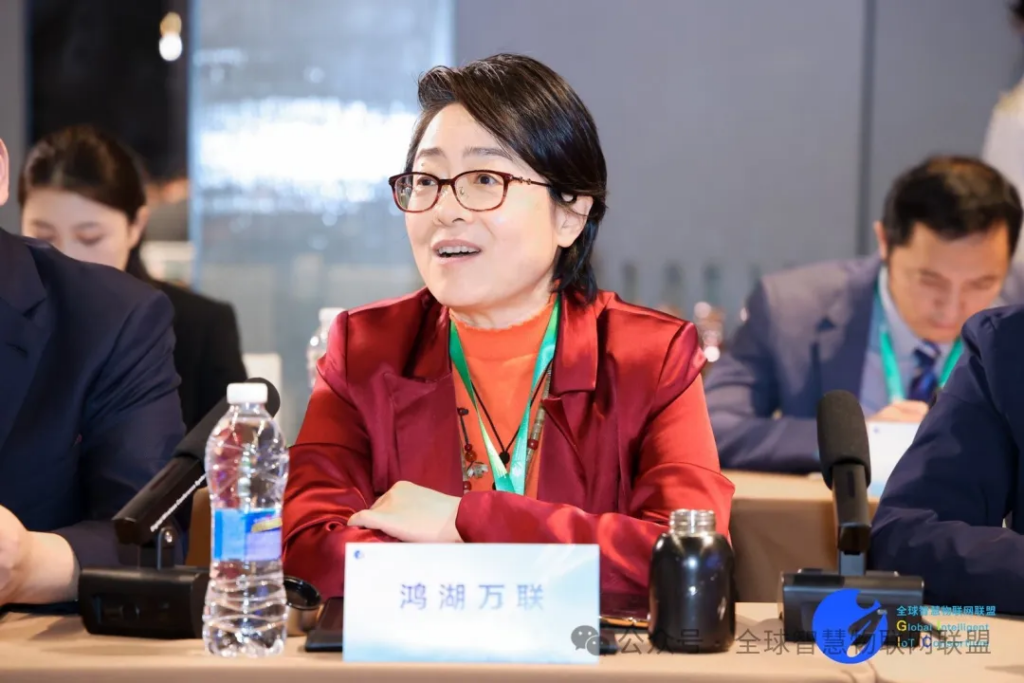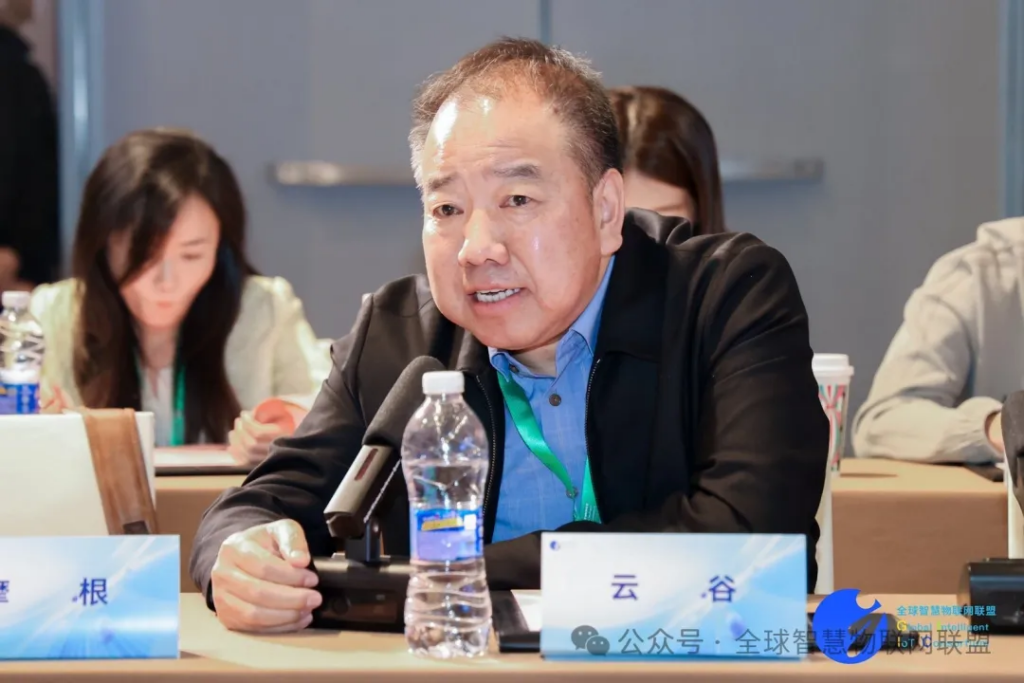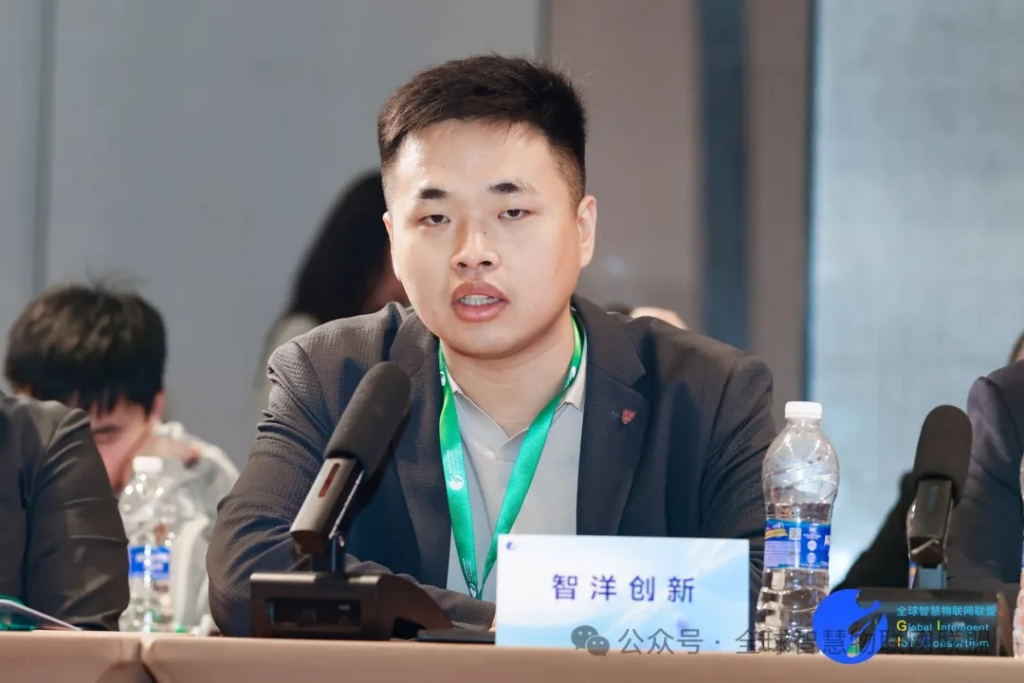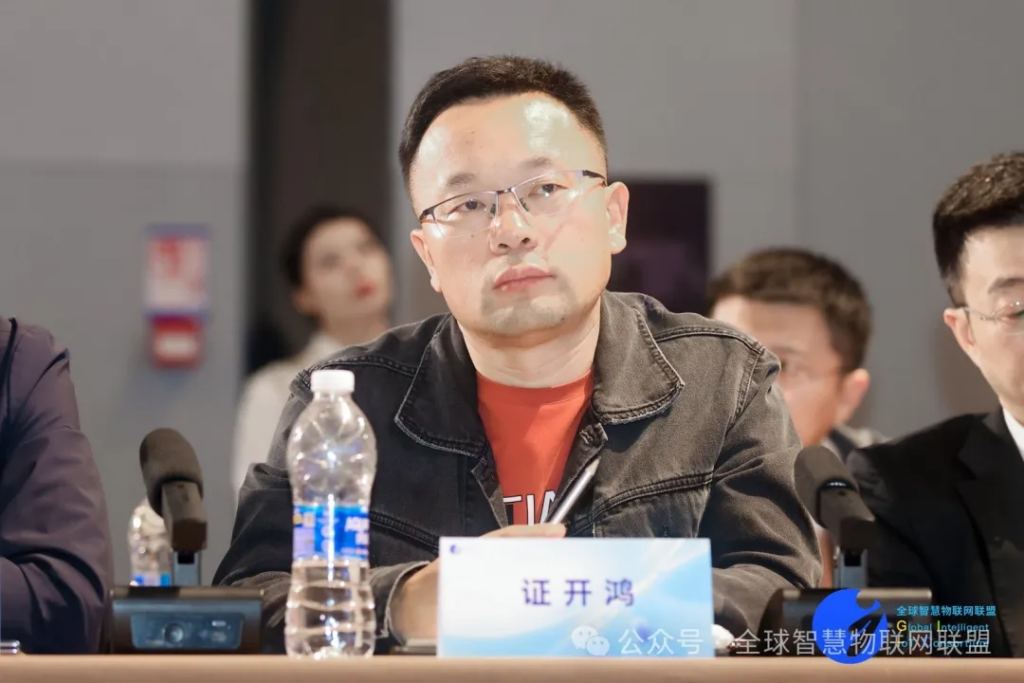On November 22nd, 2024, the third meeting of the first council of the Global Intelligent Internet of Things Alliance was successfully convened in Shenzhen. Secretary-General Hu Caiyong presided over the conference which saw representatives from forty members attend reviewing and approving several significant agenda items. Additionally, members representing various entities offered suggestions regarding directions focusing on alliance priorities expected across upcoming three-five years timeframe.
Herein follow summaries excerpted from select representative speeche
Qin Zhangbo
Senior Vice President & GM of IsoftStone, GM of SwanLink

SwanLink was established on March 1, 2022, and is a subsidiary of IsoftStone, focusing on the research and development and industrialization services of the OpenHarmony (open-source Harmony ecosystem) operating system. The company has successively received strategic investments from the Wuxi Municipal Government and Huawei Habo Fund.
Nearly three years development leveraging SwanLinkOS proprietary brand based OpenHarmony Ecosystem breakthrough various verticals parks mines transportation education successfully constructed commercial loops amassed rich technical product business scene insights now evolved leader among Harmony Ecosystem enterprises. August 28th released open-source Harmony Ecosystem AI PC garnering extensive industry attention.
However amidst rapid expansion fruitful outcomes sharply detected overlooked pain points challenges. Beyond facing objective reality imperfect ecosystem exist two principal difficulties.
High interoperability barriers
Harmony Ecosystem as an emerging technological and ecosystem significantly diverges from original supply chains. Industry-chain perspective encompasses southbound hardware northbound apps multiple dimensions. These differences impede smooth end-to-end servicing northbound apps southbound hardware constructing application scenes integrating swiftly entire supply chain. Consequently products marketed singular item formats. Single items lack complementary solution contextualized services failing satisfy entire industry systemic service demands. Already presents greatest challenge developmental phase.
Industry certification lacks uniform standards
At the GIIC alliance standard seminar preparation meeting, I highlighted how crucial it is. HarmonyOS bears great historic responsibilities, entrusted with achieving autonomy control and aiding domestically replacing foreign-made alternatives. Its goal harnessing innovative technologies empower different industries promoting high-quality industrial development. However when entering certain industries pass through numerous certifications required such as joining the Information Creation Innovation field undergoing specialized certification standard systems. This poses significant hurdles for Harmony Ecosystem dissemination.
In response to above challenges believe GIIC alliance formulated standards hold utmost significance. Collaborate Huawei partners actively engage GIIC alliance standard seminars contribute aiming unify standards facilitating quick access various interfaces connections. Only once standards established can operating system chipset manufacturers hardware software product application vendors devise language resolve terminal users' pain points truly achieve interoperability.
At the same time, we sincerely hope that the GIIC alliance can fully leverage its influence to promote the expansion of the Harmony ecosystem in a broader range. Specifically, this means delving into how certification requirements across various industries and fields can be successfully implemented within the Harmony ecosystem domain, thereby accelerating the market promotion speed of the entire Harmony ecosystem industry chain, and ultimately providing strong support and assurance for the long-term development of the Harmony ecosystem industry.
Huang Xianfeng
Chairman of Zhejiang Cloud Valley Data Technology Co., Ltd.

Zhejiang Cloud Valley Data mainly engages in IDC and computing power businesses having deployed more than 1000P (H100) GPU computing power while CPU capacity reaches 160,000 cores. We're willing to offer computing resources serving members of the consortium and support its progress.
Additionally holding appointment as Talent Attraction Ambassador for WenZhou municipal government, successful in attracting including JD.com, Huawei, SAP, Taier Terminal Laboratory amongst many others to establish presence in WenZhou delighted seeing familiar faces here today.
However, from the government's perspective, we are also facing a significant challenge. Wenzhou is primarily composed of small and medium-sized manufacturing enterprises. Although many platforms have been attracted, it is still an unknown how much service and convenience these platforms can actually bring to local small and medium-sized manufacturing enterprises. Many platforms already exist locally, so what I am thinking is that our alliance has many allies. How can we use the alliance model to connect with local governments, allowing allied enterprises to join the alliance system uniformly for implementation? This might be more convenient than each enterprise dealing with various districts, counties, or departments individually.
If the alliance needs to establish a pilot cooperation city in Wenzhou and requires coordination with local governments, I am willing to act as a bridge, supporting both sides to ensure a smooth connection between the local government and the alliance.
Hu Zhikun
Deputy General Manager of Zhiyang Innovation Technology Co., Ltd.

Zhiyang Innovation is headquartered in Zibo, Shandong, and was listed on the STAR Market in 2021. We primarily focus on industries such as power grids, water conservancy, rail transit, and new energy, providing intelligent operation and maintenance solutions. We have developed a range of three-dimensional inspection products and solutions based on visual intelligent terminals and drones, offering safe and efficient operation and maintenance management services for critical infrastructure.
Currently, we are also involved in the research and development along with the promotion and application of relevant products on open-source Harmony Ecosystem and Power Harmony Ecosystem. Based on our product Harmony Ecosystem transformation R&D and business expansion status, I have some insights:
Chip and System Adaptation
Promoting Harmony ecosystem chip and operating system adaptation vital. Although Open Harmony ecosystem has evolved to Version 5.0, there remains a need for collaborative efforts towards building new features. Upper-layer applications industry solutions depend underlying operating system characteristics chip adaptation capabilities. Productization experience chip system adaptation need much work.
Intelligent Operation Management
Products primarily focused industry intelligent operation management involve large amount infrastructure Internet things terminals. Clients face plethora devices sensors workload not reduced rather increased effort funds maintain. Therefore eager realize interconnected smart world. Thousand miles journey begins step foot need push industry scenario releases obtain financial support build intelligent scenarios.
Lastly confident China massive markets application space. Zhiyang actively invest Harmony ecosystem confidence create interconnected smart body solutions benchmark scenarios within industry influencing Chinese operating system further.
thanks all
Cheng Shengchun
General Manager of Shenzhen Zhengkaihong Technology Co., Ltd.

Zhengkai Hong relies on Zhengtong Electronics over thirty years of accumulated experience in financial technology information security technologies focusing on the research and promotion of overall hardware and software solution for open-source Harmony operating system.
During deep cultivation into finance domain used multiple operating systems Windows Linux Android etc. Early stage financial field Windows applied existed clear WOSA standard which made it standardized; transitioned Linux Kylin OS unification era People's Bank issued corresponding standards but degree adherence relatively weaker.
It holds profound significance at initial stages commence establish uniform norms. Firstly, formulating standards timely adhere consistency communication collaboration; secondly invite participation formulation execution whole processes during standard setting.
Just as with the newly announced interconnectivity guidelines, early implementation is extremely beneficial for us. We hope that this conference, which gathers global experts in the field of the Internet of Things, corporate representatives, and elite forces from the Harmony ecosystem, can jointly build, follow, and apply a unified series of interconnectivity standards to explore the development opportunities brought about by the Harmony ecosystem.